History
Early history
The HAC can trace its history back as far as 1087, but it received a The regiment has the rare distinction of having fought on the side of both
The regiment has the rare distinction of having fought on the side of both South Africa 1900–02
Members of the Company first served as a formed unit overseas in the South African War (1899–1902). Almost two hundred members served; the majority in the City of London Imperial Volunteers (CIV) as infantry, mounted infantry and in a Field Battery that was officered, and for the most part manned, by members of the Company.Territorial and Reserve Forces Act 1907
In 1907, the Company became part of the newly formed Territorial Force with the passing of the ''First World War
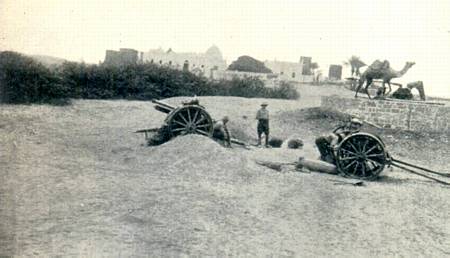
 The HAC expanded to three
The HAC expanded to three Interwar
When the Territorial Force was reconstituted as the Territorial Army (TA) in 1920, the HAC infantry battalion was reformed, while A and B Batteries formed a composite RHA unit with the City of London Yeomanry (Rough Riders) (one battery) as 11th (HAC and City of London Yeomanry) Brigade, RHA. The TA began to expand rapidly at the time of theSecond World War
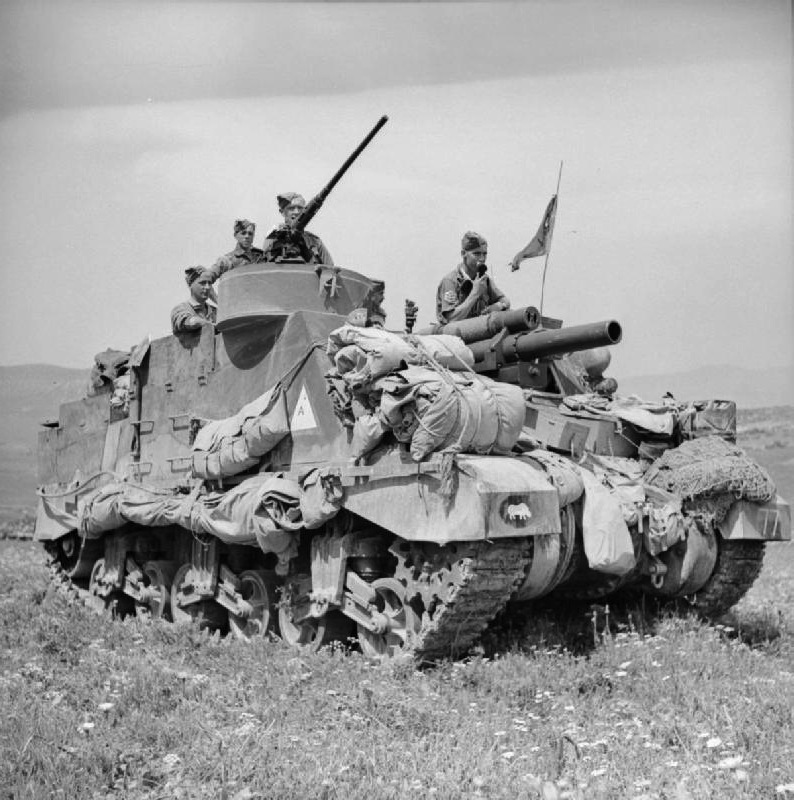
Infantry Battalion
In 1939, the Infantry Battalion became 162 (HAC) Officer Cadet Training Unit, this was the Officer Training Unit of the11th (HAC) Regiment, RHA
The 11th (HAC) Regiment RHA served in North Africa at the
12th (HAC) Regiment, RHA
The 12th (HAC) Regiment RHA took part in the Operation Torch landings and were in action at Thala in February 1943, where they halted a German advance following the13th (HAC) Regiment, RHA
The 13th (HAC) Regiment RHA equipped with Sexton self-propelled guns fought in86th (HAC) HAA Regiment, RA
::''See main article:'' 86th (Honourable Artillery Company) Heavy Anti-Aircraft Regiment, Royal Artillery The regiment formed part ofPost-war
In 1947, the Company was reorganised into: *an Infantry Battalion *1st Regiment HAC, RHA, of self-propelled Artillery (from 11th (HAC) RHA Regiment) *86th (Honourable Artillery Company) Heavy Anti-Aircraft Regiment, Royal Artillery, 2nd Regiment HAC, (HAA) of heavy Anti-Aircraft Artillery (from 86th (HAC) HAA Regiment; disbanded 1955) *G Locating Battery (from 12th (HAC) RHA Regiment; disbanded 1961) In 1973, the Regiment was again reorganised; it was given the role of providing Stay-behind, 'Stay Behind' Observation Posts (OPs) for the British Army of the Rhine as one of the three Territorial Army units making up the Corps Patrol Unit (with Artists' Rifles, 21 and 23 Special Air Service Regiment (Reserve), 23 Special Air Service, SAS). The three sabre squadrons, each with a number of four to six man patrols provided Intelligence, surveillance, target acquisition, and reconnaissance, surveillance and target acquisition capabilities to the HQs of 1st Artillery Brigade (HQ Sqn HAC), 1 Armoured Division (I Sqn HAC), 4 Armoured Division (II Sqn HAC), and 1 BR Corps (III Sqn HAC) with one ‘sabre’ squadron each. The new structure was: *Three patrol squadrons (1, 2 and 3 or I, II and III) – a fourth patrol squadron was formed for a short period in the 1980s *Headquarter Squadron, including Training Wing and Medical Wing *The Gun Troop (a battery of six Ordnance QF 25 pounder, 25 pounder guns and not part of the OP role) *Band *Corps of Drums In 1992, the signals troops that had been integrated into the patrol squadrons were brought together to form the Signal Squadron; they were subsequently re-integrated with the patrol squadrons in 2010.
In 1992, on Salisbury Plain, the HAC was the last British Army unit to fire the Ordnance QF 25 pounder, 25-pounder in the field, as the Gun Troop retrained onto the 105mm Light Gun. The 25 pounder continued to be fired ceremonially until it was replaced by the Light Gun.
In 1996, the first formed unit of the Regiment to be mobilised for active service since the Second World War was called up for Operation Resolute with the NATO IFOR in Bosnia and Herzegovina, Bosnia.
The Regiment participated in the celebration of HM The Queen's Golden Jubilee on 4 June 2002 by firing a 62 gun salute at the Tower of London, and by providing a Guard of Honour (including the Regimental Band and the Massed Corps of Drums of the 1st Bn Grenadier Guards and the HAC) at St Paul's Cathedral. In December of that year, the Captain-General visited and dined with the company to commemorate her Golden Jubilee as Captain-General.
In 2005, the guns were withdrawn from Gun Troop, which was renamed Liaison Troop.
In 2006, the HAC was the first major unit of the Territorial Army to convert to the Bowman (communications system), Bowman communications system. When Bowman was temporarily withdrawn from the Territorial Army in 2008/9, it was one of the few units to retain the equipment.
In 2016, Queen Elizabeth II became the longest-serving Captain-General of the HAC, with 64 years of service.
In 2017 A Battery (1st City of London) Honourable Artillery Company, was re-formed to provide gunners in support of 7th Parachute Regiment Royal Horse Artillery.
In 1992, the signals troops that had been integrated into the patrol squadrons were brought together to form the Signal Squadron; they were subsequently re-integrated with the patrol squadrons in 2010.
In 1992, on Salisbury Plain, the HAC was the last British Army unit to fire the Ordnance QF 25 pounder, 25-pounder in the field, as the Gun Troop retrained onto the 105mm Light Gun. The 25 pounder continued to be fired ceremonially until it was replaced by the Light Gun.
In 1996, the first formed unit of the Regiment to be mobilised for active service since the Second World War was called up for Operation Resolute with the NATO IFOR in Bosnia and Herzegovina, Bosnia.
The Regiment participated in the celebration of HM The Queen's Golden Jubilee on 4 June 2002 by firing a 62 gun salute at the Tower of London, and by providing a Guard of Honour (including the Regimental Band and the Massed Corps of Drums of the 1st Bn Grenadier Guards and the HAC) at St Paul's Cathedral. In December of that year, the Captain-General visited and dined with the company to commemorate her Golden Jubilee as Captain-General.
In 2005, the guns were withdrawn from Gun Troop, which was renamed Liaison Troop.
In 2006, the HAC was the first major unit of the Territorial Army to convert to the Bowman (communications system), Bowman communications system. When Bowman was temporarily withdrawn from the Territorial Army in 2008/9, it was one of the few units to retain the equipment.
In 2016, Queen Elizabeth II became the longest-serving Captain-General of the HAC, with 64 years of service.
In 2017 A Battery (1st City of London) Honourable Artillery Company, was re-formed to provide gunners in support of 7th Parachute Regiment Royal Horse Artillery.
Current role and organisation
Current role
 The main role of the regiment is surveillance and target acquisition, and the provision of parachute gunners in support of 16 Air Assault Brigade.
The HAC has a ceremonial role in providing guards of honour at the Guildhall, London, Guildhall in the City of London during state visits and, since 1924 (when the Royal Artillery ceased to be stationed at the Tower), has provided the saluting battery at the Tower of London for state occasions.
The main role of the regiment is surveillance and target acquisition, and the provision of parachute gunners in support of 16 Air Assault Brigade.
The HAC has a ceremonial role in providing guards of honour at the Guildhall, London, Guildhall in the City of London during state visits and, since 1924 (when the Royal Artillery ceased to be stationed at the Tower), has provided the saluting battery at the Tower of London for state occasions.
Training
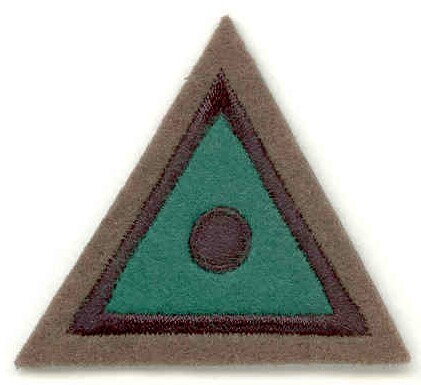 The HAC is one of only a small number of Army Reserve units with responsibility for the carrying out portions of Phase One (recruits) and Two training of its own soldiers 'in house'. The Phase One course comprises six HAC-only weekends, followed by a two-week training period with other reserve soldiers at Army Training Centre Pirbright. Unlike most Army Reserve units, who are only required to train at up to sub-unit (company or squadron) level, the HAC is required to train as a regiment.
Those who wish to serve in 1 Squadron are required to undertake the Surveillance and Reconnaissance Patrols Course (SRPC), an arduous course with only a 10% pass rate. Service as a Special Observer qualifies for additional pay and specialist courses and is open to all arms and services.
The HAC is one of only a small number of Army Reserve units with responsibility for the carrying out portions of Phase One (recruits) and Two training of its own soldiers 'in house'. The Phase One course comprises six HAC-only weekends, followed by a two-week training period with other reserve soldiers at Army Training Centre Pirbright. Unlike most Army Reserve units, who are only required to train at up to sub-unit (company or squadron) level, the HAC is required to train as a regiment.
Those who wish to serve in 1 Squadron are required to undertake the Surveillance and Reconnaissance Patrols Course (SRPC), an arduous course with only a 10% pass rate. Service as a Special Observer qualifies for additional pay and specialist courses and is open to all arms and services.
Organisation
The HAC is not part of the Royal Regiment of Artillery, being an older and separate regiment with its own uniform, insignia and colours. Operationally, the regiment forms part of 77th Brigade (United Kingdom), 77 Brigade (having previously been part of 1st Intelligence Surveillance and Reconnaissance Brigade) with sub units supporting the Army Special Operations Brigade and 16 Air Assault Brigade Combat Team. The sub units of the HAC are: *Headquarters Squadron. **The Corps of Drums. The last remaining sub-unit from the infantry battalions and still wearing the grenade beret badge, Foot Guards stable belt, belt, beret badge backing and tactical recognition flash. As with an infantry battalion corps of drums, the drummers are 'soldiers first' and regularly deploy soldiers on operations as well as fulfilling their ceremonial role. The Corps of Drums forms part of HQ Squadron and is a separate entity from the Band, who are primarily musicians. They provide personnel for A Battery whilst still maintaining their ceremonial drumming role. **The Medical Wing, commanded by the Surgeon Major, who is a Royal Army Medical Corps officer, provides medical support to the Regiment for peacetime training and on deployment. Combat medical technicians within the Medical Wing undergo additional specialist medical training with the Defence Medical Services. ** CIS Troop, a troop to provide communications information systems capability to the HAC and other units. ** Sicily Troop. The enablers of the Regiment, providing logistics and motorised capability to the HAC and other units. * A (1st City of London) Battery, Honourable Artillery Company, a battery of L118 light gun, 105mm light guns. The battery is paired with 7th Parachute Regiment Royal Horse Artillery. * 1 Squadron, comprising two troops of surveillance and reconnaissance patrols. 1 Squadron provides long-range surveillance, reconnaissance and a joint-fires capability as formed surveillance and target acquisition patrols to support the Army Special Operations Brigade, following the Integrated Review, 2021. * 2 Squadron, composed of a squadron headquarters, and three troops (Knightsbridge, El Hamma and El Alamein) of light ISR Detachments. * III Squadron, composed of a squadron headquarters, and three troops (Aden, Gaza and Rhine) of light ISR Detachments. Future Soldier programme: under this programme the HAC was moved to 77th Brigade (United Kingdom), 77th Brigade. A Battery will provide two guns to each battery of 7 (Para) RHA and the 1 Squadron will provide Special Patrols to the Army Special Operations Brigade.Operations
The Regiment has had individuals or sub-units on active service at all times since 1996; with the personnel serving in a wide variety of roles in Northern Ireland, Bosnia, Kosovo, Iraq, Afghanistan and various countries in Africa. Commitments included the deployment of individuals to HUMINT, human intelligence roles in the Balkans (including as part of Joint Commission Observer teams) and then formed patrols to Bosnia, Kosovo and Iraq; independent sub-units to Operation Telic 4 and 5 in Iraq and L Troop to Operation Telic 9; as well as individual and group reinforcements to other infantry and artillery units. In Afghanistan deployed personnel were divided between operating and maintaining counter indirect fire systems and other high technology equipment and forming part of the Brigade Reconnaissance Force (BRF). On Tuesday 4 December 2007, Trooper Jack Sadler, who was serving with the BRF, was killed when his vehicle was hit by a blast north of Sangin, in Helmand province. Two other soldiers were injured in the attack. In 2008, the Runner-up for the Cobra Trophy for Volunteer Reservist of the year was Trooper Adam Cocks of 2 Squadron, who was severely injured in Afghanistan when his vehicle struck a mine. While recuperating at Headley Court rehabilitation centre, he and a friend came up with the idea of a rugby match at Twickenham Stadium, Twickenham to help raise money for the charity Help for Heroes.Regimental museum
The Honourable Artillery Company Museum is located at Armoury House.Dress
In 1830, King William IV ordered that the uniform of the HAC should be based on that of theBerets
The HAC wear a khaki beret with the HAC's cap badge, beret badge ("short arms") in white metal on a black backing. Officers and warrant officers wear an embroidered cloth version of the same badge. The Corps of Drums and Regimental Band wear the HAC infantry grenade on a blue red blue backing, which is superficially identical to that of theOther headdress
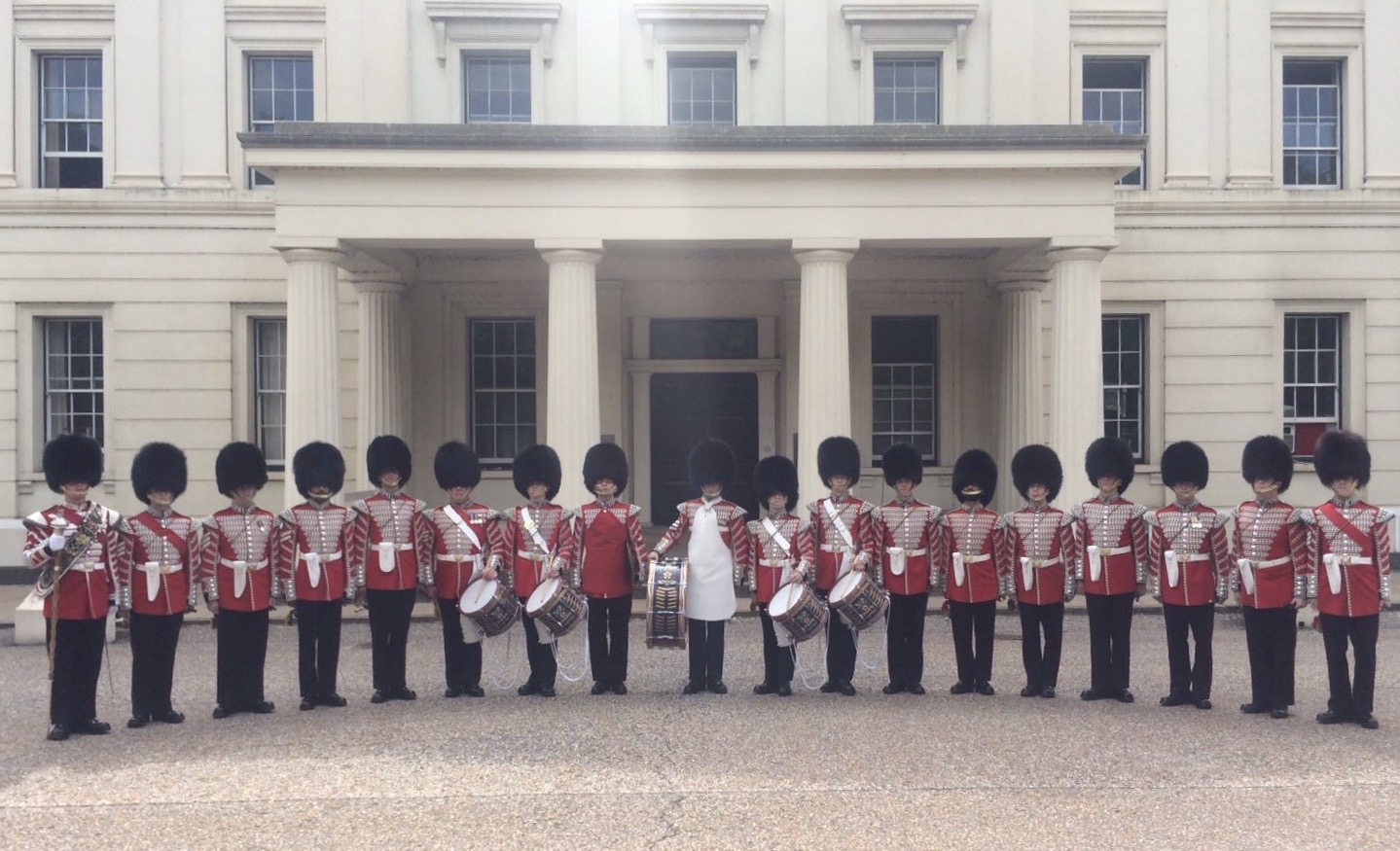 On the forage cap, the HAC infantry grenade (white metal) is worn by junior ranks of all subunits of the regiment. Sergeants and Warrant Officers wear a different version of the grenade, which has the letters HAC in brass on the ball of the grenade. Officers wear an embroidered silver grenade on their forage caps in No 1 Dress (Infantry) and on the Service Dress forage cap but when in No 1 Dress (Gunner) they wear the HAC Artillery cap badge. The latter is similar to that of the Royal Artillery but with "HAC" and "Arma Pacis Fulcra" replacing "Ubique" and "Quo Fas et Gloria Ducunt". In Full Dress (normally only worn by the Band and Corps of Drums), the Bearskin is worn without a plume.
On the forage cap, the HAC infantry grenade (white metal) is worn by junior ranks of all subunits of the regiment. Sergeants and Warrant Officers wear a different version of the grenade, which has the letters HAC in brass on the ball of the grenade. Officers wear an embroidered silver grenade on their forage caps in No 1 Dress (Infantry) and on the Service Dress forage cap but when in No 1 Dress (Gunner) they wear the HAC Artillery cap badge. The latter is similar to that of the Royal Artillery but with "HAC" and "Arma Pacis Fulcra" replacing "Ubique" and "Quo Fas et Gloria Ducunt". In Full Dress (normally only worn by the Band and Corps of Drums), the Bearskin is worn without a plume.
Badges of rank
In No 2 dress, Soldiers wear the larger Foot Guards badges of rank and qualification. Lance Corporals wear two chevrons and Lance Sergeants three. In Full Dress and Number 1 dress, WO2's wear a large colour badge of the same pattern as the Grenadier Guards, but in silver rather than gold. Officers' crowns and stars are of the same pattern as those of the Grenadiers (Order of the Garter), woven for combat uniforms but in silver for Service and Barrack Dress.Stable belts
Each Squadron wears a different stable belt: *A (City of London) Battery – Light blue with narrow yellow stripe through the middle. ( Identical to the Royal Horse Artillery) *Headquarter Squadron and Band – red and blue edged with narrow yellow stripes *I Squadron – red *II Squadron – green (Identical to that worn by The Rifles) *III Squadron – blue *Training Wing – black *Corps of Drums – blue red blue (Identical to that worn by the Foot Guards)Other distinctions
 In 1906, King Edward VII gave the HAC the distinction of a special ribbon for the Volunteer Officers' Decoration and Volunteer Long Service Medal. The ribbon, based on The King's personal colours (in turn taken from the Royal Standard), is red and blue edged with narrow yellow stripes. This ribbon has been carried forward to subsequent Territorial long service medals awarded to HAC members.
B Battery HAC supported the 10th Hussars during the Second World War and, in 1972, the Captain General approved the Battery wearing a 10th Hussar button as the top button on Numbers 1, 2 and 10 dress. This privilege is carried on by Number II Squadron following the 1973 re-organisation.
Each year the Captain General awards a prize to the member of the Regiment who is deemed to have made an outstanding contribution to the Regiment. Holders of this prize, known as the King's or Queen's Prize wear a badge incorporating the Captain General's cypher and the year of award on Numbers 1, 2, 10 and 13 Dress.
In 1906, King Edward VII gave the HAC the distinction of a special ribbon for the Volunteer Officers' Decoration and Volunteer Long Service Medal. The ribbon, based on The King's personal colours (in turn taken from the Royal Standard), is red and blue edged with narrow yellow stripes. This ribbon has been carried forward to subsequent Territorial long service medals awarded to HAC members.
B Battery HAC supported the 10th Hussars during the Second World War and, in 1972, the Captain General approved the Battery wearing a 10th Hussar button as the top button on Numbers 1, 2 and 10 dress. This privilege is carried on by Number II Squadron following the 1973 re-organisation.
Each year the Captain General awards a prize to the member of the Regiment who is deemed to have made an outstanding contribution to the Regiment. Holders of this prize, known as the King's or Queen's Prize wear a badge incorporating the Captain General's cypher and the year of award on Numbers 1, 2, 10 and 13 Dress.
Coat of arms
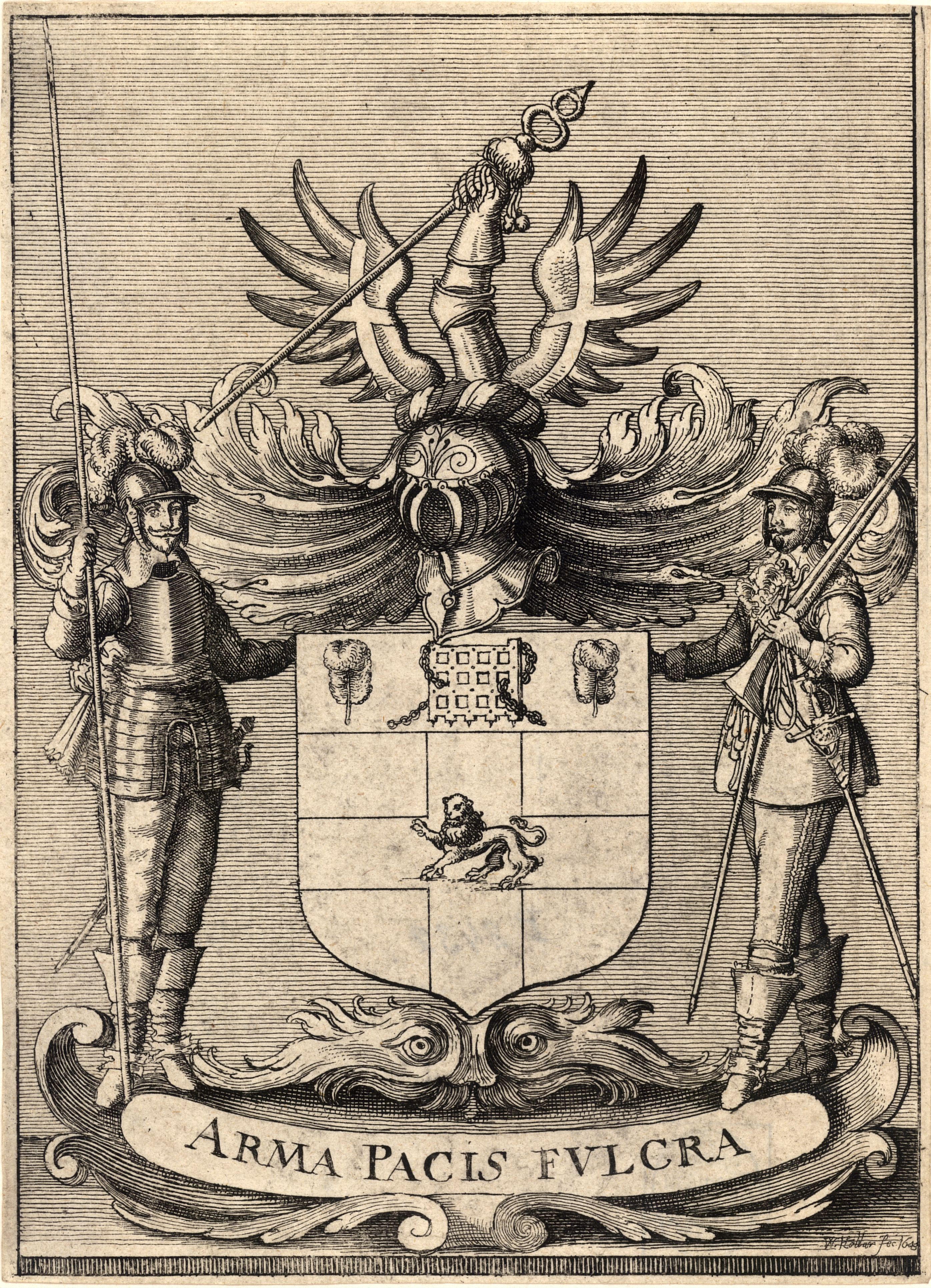 The coat of arms of the company is a Shield of Arms, helm, mantling and crest with as supporters a Pikeman and a Musketeer and the motto 'Arma Pacis Fulcra', Unlike other regiments of the British Army, the HAC is incorporated and is therefore eligible to bear and use a Coat of arms. It is believed to date from circa 1615 and the coat of arms appears on a military manual published in 1629.
The coat of arms of the company is a Shield of Arms, helm, mantling and crest with as supporters a Pikeman and a Musketeer and the motto 'Arma Pacis Fulcra', Unlike other regiments of the British Army, the HAC is incorporated and is therefore eligible to bear and use a Coat of arms. It is believed to date from circa 1615 and the coat of arms appears on a military manual published in 1629.
Battle honours
The regiment's battle honours are as follows: * South Africa 1900–02. * The Great War (3 Bns and 7 Btys): Ypres 1915 'Ypres 1917, 17, Somme 1916 'Somme 1918 (Battle honour), 18, Ancre Heights, Ancre 1916, Arras 1917 'Arras 1918, 18, Scarpe 1917 Battle of the Scarpe (1918), '18, Arleux, Bullecourt, Battle of Pilckem, Pilckem, Polygon Wood, Battle of Broodseinde, Broodseinde, Battle of Poelcappelle, Poelcappelle, Battle of Passchendaele, Passchendaele, Battle of Amiens (1918), Amiens, Battle of Albert (1918), Albert 1918, Bapaume 1918, Drocourt-Quéant, Hindenburg Line, Épehy, Épèhy, Battle of St. Quentin Canal, St. Quentin Canal, Cambrai 1918, Selle (Somme tributary), Selle, Battle of the Sambre (1918), Sambre, France and Flanders 1914–18, Battle of the Piave River, Piave, Vittorio Veneto, Italy 1917–18, Battle of Rafa, Rafah, Sinai and Palestine Campaign, Egypt 1915–17, Third Battle of Gaza, Gaza, Battle of Mughar Ridge, El Mughar, Battle of Jerusalem (1917), Jerusalem, Arab Revolt, Jordan, Battle of Megiddo (1918), Megiddo, Battle of Sharon, Sharon, Damascus, Palestine 1917–18, South Arabia during World War I, Aden. *The Second World War: Operation Goodwood, Bourguébus Ridge, Antwerp, Le Havre, Operation Plunder, Rhine, North-West Europe 1944-45, North-West Europe 1944–45, Battle of Gazala, Knightsbridge, Second Battle of El Alamein, El Alamein, El Hamma, Sbiba, Thala, Tunis, North Africa 1941–43, Sicily 1943, Battle of Monte Cassino, Cassino II, Coriano, Senio, Italy 1944–45. The battle honours listed were awarded for services of both infantry and artillery units of the HAC. Those in bold are borne on the Colours.Colours
The HAC is unique within the British Army in having two types of Colours and guidons, Colours. The HAC has its ceremonial Guns (which are considered Colours in Artillery regiments), but also carries a stand of traditional Colours of the Infantry. These Colours follow the pattern of line infantry regiments: the Queen's Colour being a version of the Union Flag, the Regimental Colour being blue with the HAC Coat of Arms in the centre. The last four occasions that new Colours have been presented to the Regiment were in 1928 by Edward, Prince of Wales (later Edward VIII), and in 1955, 1980 and on 18 May 2007 by HM Queen Elizabeth II, the regiment's Captain General.City of London Police Special Constabulary
In 1919, following a decision to increase the strength of the Metropolitan Police Reserve Force, the Home Secretary approached the HAC to form a Division of Special Constabulary. Some 150 members, mostly Great War veterans, rallied to the call and joined the Division, forming the HAC Detachment. At the outbreak of the Second World War, the Detachment was integrated into G Division of the Metropolitan Police and then later with Islington Division. Following reorganisation, the Detachment is now part of the City of London Police Special Constabulary, its administrative base is Armoury House. In 2010, the Ferrers Trophy was awarded to Special Constable Patrick Rarden of the detachment for using his banking skills and experience to help train colleagues and provide invaluable assistance to solve fraud cases."The Company"
 As well as the Army Reserve Regiment and Specials (the "Active Units"), the HAC exists as a separate charitable organisation—often colloquially referred to as "The Company" or "The House". The Company owns Armoury House and the Regiment's current grounds and, in addition to supporting the Active Unit, provides the basis for a social calendar. There are two distinct classes of member of the Company. The first, Regimental Members, are those who are currently serving or who have previously served in the HAC Regiment or City of London Special Constabulary. The second, Members, must have served at least two years in Regular or three years in Volunteer units of the Crown or in the Police. Some members are people who have reached senior rank (for example Gerald Grosvenor, 6th Duke of Westminster, Major General The Duke of Westminster) and they provide some 17% of the overall membership of the Company.
Since 1633, the Company has been governed by a Court of Assistants, like many of the Great Twelve City Livery Companies, City Livery Companies. The first Court for which a record can be found was held in January 1657.
As well as the Army Reserve Regiment and Specials (the "Active Units"), the HAC exists as a separate charitable organisation—often colloquially referred to as "The Company" or "The House". The Company owns Armoury House and the Regiment's current grounds and, in addition to supporting the Active Unit, provides the basis for a social calendar. There are two distinct classes of member of the Company. The first, Regimental Members, are those who are currently serving or who have previously served in the HAC Regiment or City of London Special Constabulary. The second, Members, must have served at least two years in Regular or three years in Volunteer units of the Crown or in the Police. Some members are people who have reached senior rank (for example Gerald Grosvenor, 6th Duke of Westminster, Major General The Duke of Westminster) and they provide some 17% of the overall membership of the Company.
Since 1633, the Company has been governed by a Court of Assistants, like many of the Great Twelve City Livery Companies, City Livery Companies. The first Court for which a record can be found was held in January 1657.
Pikemen and Musketeers
 The Company of Pikemen and Musketeers, Pikemen and Musketeers (formed 1925, given a Royal Warrant 1955) are made up of veteran members of the Active Units. They are the personal bodyguard of the Lord Mayor of the City of London and form his Guard on ceremonial occasions.
The Company of Pikemen and Musketeers, Pikemen and Musketeers (formed 1925, given a Royal Warrant 1955) are made up of veteran members of the Active Units. They are the personal bodyguard of the Lord Mayor of the City of London and form his Guard on ceremonial occasions.
Light Cavalry
 The Light Cavalry Troop (formed 1979, granted Royal Warrant 2004) is open to both Regimental and Non-Regimental members of the Company. They escort the Lady Mayoress, and in particular provide her 'Travelling Escort' at the Lord Mayor's Show.
The Light Cavalry Troop (formed 1979, granted Royal Warrant 2004) is open to both Regimental and Non-Regimental members of the Company. They escort the Lady Mayoress, and in particular provide her 'Travelling Escort' at the Lord Mayor's Show.
Grounds
Site
From 1538 to 1658, the HAC occupied and trained at theArmoury House
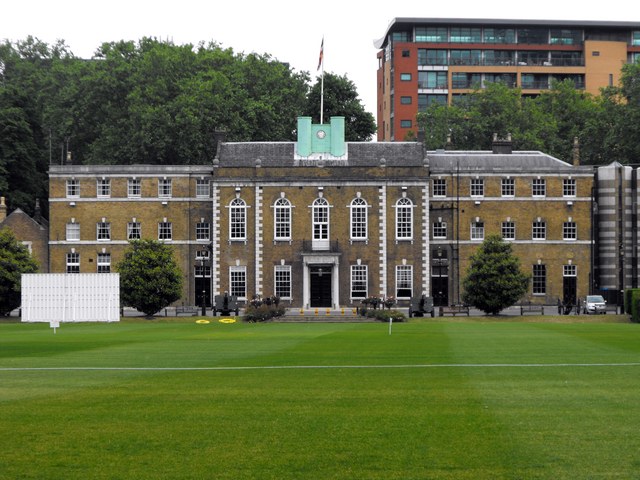 Armoury House stands at the north of these grounds, and is the home of the HAC. It was built to replace a smaller 17th-century armoury; the central portion being completed in 1735 to designs by Thomas Stibbs financed in part by a gift of £500 from King George I. Subscriptions were received from members of the Company and from the Court of Lieutenancy for the City of London. The building cost £1,332.
In 1802, a distinctive flag tower was added to the roof. The East and West Wings were built in 1828, replacing much smaller buildings on either side of Armoury House. A cottage, originally for the Sergeant Major, was built against the West Wing in 1850. 1862 saw the completion of a Victorian drill hall attached to the rear. The Albert Room, as it was called, featured an iron trussed roof and was named in honour of the then recently deceased Prince Albert.
On 9 June 1990, the hall was bombed by the Provisional IRA whilst a 21st birthday party was in progress, injuring 17 civilians.
In recent years parts of the building have been available on a private hire basis for events.
Armoury House stands at the north of these grounds, and is the home of the HAC. It was built to replace a smaller 17th-century armoury; the central portion being completed in 1735 to designs by Thomas Stibbs financed in part by a gift of £500 from King George I. Subscriptions were received from members of the Company and from the Court of Lieutenancy for the City of London. The building cost £1,332.
In 1802, a distinctive flag tower was added to the roof. The East and West Wings were built in 1828, replacing much smaller buildings on either side of Armoury House. A cottage, originally for the Sergeant Major, was built against the West Wing in 1850. 1862 saw the completion of a Victorian drill hall attached to the rear. The Albert Room, as it was called, featured an iron trussed roof and was named in honour of the then recently deceased Prince Albert.
On 9 June 1990, the hall was bombed by the Provisional IRA whilst a 21st birthday party was in progress, injuring 17 civilians.
In recent years parts of the building have been available on a private hire basis for events.
Finsbury Barracks
 Finsbury Barracks is the Regiment's Headquarters and is leased by Reserve Forces and Cadets Association, London RFCA from the HAC itself. Completed for the Royal London Militia in 1857, it was designed by the architect Joseph Jennings and built in Kentish Ragstone. An extension, faced in striped stone and granite, linking Finsbury Barracks to Armoury House was designed by Arnold & Boston and added in 1994. Finsbury Barracks was refurbished in the same year and was re-opened by the Captain General in 1996.
Finsbury Barracks is the Regiment's Headquarters and is leased by Reserve Forces and Cadets Association, London RFCA from the HAC itself. Completed for the Royal London Militia in 1857, it was designed by the architect Joseph Jennings and built in Kentish Ragstone. An extension, faced in striped stone and granite, linking Finsbury Barracks to Armoury House was designed by Arnold & Boston and added in 1994. Finsbury Barracks was refurbished in the same year and was re-opened by the Captain General in 1996.
The HAC Shooting Lodge / "Bisley Hut"
 The lodge was built in 1928 on land leased from the National Rifle Association (United Kingdom), National Rifle Association at National Shooting Centre, Bisley and replaced the original hut on the site. The building was funded by donations, including some in memory of the fallen of the First World War. HAC vacated the lodge in 2012 following the expiry of their lease and now affiliates to the London & Middlesex Rifle Association.
The lodge was built in 1928 on land leased from the National Rifle Association (United Kingdom), National Rifle Association at National Shooting Centre, Bisley and replaced the original hut on the site. The building was funded by donations, including some in memory of the fallen of the First World War. HAC vacated the lodge in 2012 following the expiry of their lease and now affiliates to the London & Middlesex Rifle Association.
Pencelli Estate
In 1999, the Company acquired the Welsh Pencelli Estate near Brecon as an area that could be used by the Regiment for military and adventure training. The historic estate lies in the heart of the Brecon Beacons National Park and comprises approximately 14,000 acres (57 km²) of hill land.Notable members of the HAC

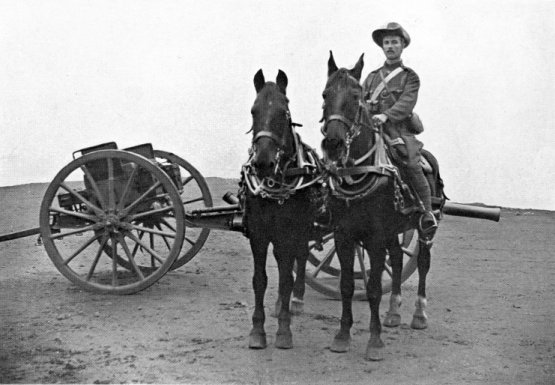
 ;Colonels Commandant
*Colonel the Rudolph Feilding, 9th Earl of Denbigh, Earl of Denbigh (1903–1933)
*Colonel the George Monckton-Arundell, 8th Viscount Galway, Viscount Galway (1933–1935)
*Colonel the Hugh Fortescue, 5th Earl Fortescue, Earl Fortescue (1935–1943)
*Field Marshal (UK), Field Marshal John Vereker, 6th Viscount Gort, Viscount Gort (1943–1946)
*Field Marshal (UK), Field Marshal Alan Brooke, 1st Viscount Alanbrooke (1946–1954)
*Major-General (United Kingdom), Major General Julian Gascoigne, Sir Julian Gascoigne (1954–1959)
* General Richard Goodbody, Sir Richard Goodbody (1959–1966)
* General Rodney Moore (British Army officer), Sir Rodney Moore (1966–1976)
* General Victor FitzGeorge-Balfour, Sir Victor FitzGeorge-Balfour (1976–1984)
* General Richard Trant, Sir Richard Trant (1984–1992)
* General Michael Wilkes, Sir Michael Wilkes (1992–1998)
* General Alexander Harley, Sir Alexander Harley (1998–2003)
* General Timothy Granville-Chapman, Sir Timothy Granville-Chapman (2003–2010)
* Lieutenant General (United Kingdom), Lieutenant General Barney White-Spunner, Sir Barney White-Spunner (2010–2013)
*General (United Kingdom), General Richard Barrons, Sir Richard Barrons (2013–2019)
*General Patrick Sanders (British Army officer), Sir Patrick Sanders (2019–)
;Others
* Major Tom Addington, an outstanding all-rounder: sportsman, Commando, paratrooper and horse gunner, he was awarded an MC in the Netherlands.
*Jock Airlie (Seton), Association Football Player
*Kevin Alderton, holder of the blind speed ski world record
*Edward John Amoore, Olympic Gold and Bronze medalist for shooting at 1908 Olympics
*Major General Dennis Beckett CB DSO OBE awarded a DSO at the Battle of Monte Cassino
*Prince Rupert of the RhinePage 62, 5 March 1915 Edition, The War Illustrated A WW1 Pictorial Record of the Conflict of the Nations, Edited By J A Hammerton
*George Monck, 1st Duke of Albemarle
*Gregory Barker, MP
* Nigel Bruce, actor. Served with the Regiment 1914-1915.
* Bertram Bowyer, 2nd Baron Denham, KBE, PC (3 October 1927 – 1 December 2021), a British Conservative politician, hereditary peer, writer and former member of the House of Lords. He was one of the few people to serve in the governments of five different Prime Ministers.
* Robert Henry Cain, Major Robert Cain Victoria Cross, VC Efficiency Decoration, TD (2 January 1909 – 2 May 1974)
* James Carreras, Sir James Carreras, British film producer, who, together with William Hinds, founded the legendary British film company Hammer Film Productions.
* Leo Cooper (publisher), Leo Cooper, publisher
* John Laurie, actor
* Edward Leigh MP
* Charles Greenwood, HAC before joining regular artillery, earned MC at Monte Cassino
*Edward Heath, Sir Edward Heath, former Prime Minister
* Colonel Robert Dow Hunter – Army officer who knocked out two Tiger tanks in Germany
*LGen Andrew Leslie (general), Andrew Leslie OMM, MSC, MSM, CD, former Chief of Land Staff, Canadian Forces
* Major David Liddell MC
* Guy Liddell CB MBE MC, Deputy-Director-General MI5, One of Britain's principal wartime spymasters.
* Gilbert McMicking (British politician), Gilbert McMicking Order of St Michael and St George, CMG Scotland, Scottish Liberal Party (UK), Liberal Party politician.
*Vincenzo Lunardi, honorary member
*General Sir Richard O'Connor, KT, GCB, DSO, MC, ADC
*Richard Owen, English biologist, comparative anatomist and palaeontologist.
*Kenneth Powell (tennis), Kenneth Powell, Olympic hurdler
* Hugh Pritchard (Olympic biathlete 2002 games)
*Prince Henry, Duke of Gloucester
* Marmaduke Roydon, Sir Marmaduke Roydon (1583 – 28 April 1646) an English merchant-adventurer and colonial planter, known also as a Royalist army officer.
* Patrick Shovelton, one of Whitehall's most formidable international negotiators
* John Talbot, awarded the MC in Normandy in 1944.
*John Venn (politician), John Venn an English politician who sat in the House of Commons from 1641 to 1650. He was one of the regicides of King Charles I.
*Lambert Ward, Sir Albert Lambert Ward, 1st Baronet Conservative Party (UK), Conservative Party politician.
*Basil Williams (historian), Basil Williams, historian
* Evelyn Wellings, Evelyn Maitland "Lyn" Wellings (6 April 1909 – 10 September 1992) Egyptian-born English cricketer and journalist, who played for Oxford University and Surrey.
;Colonels Commandant
*Colonel the Rudolph Feilding, 9th Earl of Denbigh, Earl of Denbigh (1903–1933)
*Colonel the George Monckton-Arundell, 8th Viscount Galway, Viscount Galway (1933–1935)
*Colonel the Hugh Fortescue, 5th Earl Fortescue, Earl Fortescue (1935–1943)
*Field Marshal (UK), Field Marshal John Vereker, 6th Viscount Gort, Viscount Gort (1943–1946)
*Field Marshal (UK), Field Marshal Alan Brooke, 1st Viscount Alanbrooke (1946–1954)
*Major-General (United Kingdom), Major General Julian Gascoigne, Sir Julian Gascoigne (1954–1959)
* General Richard Goodbody, Sir Richard Goodbody (1959–1966)
* General Rodney Moore (British Army officer), Sir Rodney Moore (1966–1976)
* General Victor FitzGeorge-Balfour, Sir Victor FitzGeorge-Balfour (1976–1984)
* General Richard Trant, Sir Richard Trant (1984–1992)
* General Michael Wilkes, Sir Michael Wilkes (1992–1998)
* General Alexander Harley, Sir Alexander Harley (1998–2003)
* General Timothy Granville-Chapman, Sir Timothy Granville-Chapman (2003–2010)
* Lieutenant General (United Kingdom), Lieutenant General Barney White-Spunner, Sir Barney White-Spunner (2010–2013)
*General (United Kingdom), General Richard Barrons, Sir Richard Barrons (2013–2019)
*General Patrick Sanders (British Army officer), Sir Patrick Sanders (2019–)
;Others
* Major Tom Addington, an outstanding all-rounder: sportsman, Commando, paratrooper and horse gunner, he was awarded an MC in the Netherlands.
*Jock Airlie (Seton), Association Football Player
*Kevin Alderton, holder of the blind speed ski world record
*Edward John Amoore, Olympic Gold and Bronze medalist for shooting at 1908 Olympics
*Major General Dennis Beckett CB DSO OBE awarded a DSO at the Battle of Monte Cassino
*Prince Rupert of the RhinePage 62, 5 March 1915 Edition, The War Illustrated A WW1 Pictorial Record of the Conflict of the Nations, Edited By J A Hammerton
*George Monck, 1st Duke of Albemarle
*Gregory Barker, MP
* Nigel Bruce, actor. Served with the Regiment 1914-1915.
* Bertram Bowyer, 2nd Baron Denham, KBE, PC (3 October 1927 – 1 December 2021), a British Conservative politician, hereditary peer, writer and former member of the House of Lords. He was one of the few people to serve in the governments of five different Prime Ministers.
* Robert Henry Cain, Major Robert Cain Victoria Cross, VC Efficiency Decoration, TD (2 January 1909 – 2 May 1974)
* James Carreras, Sir James Carreras, British film producer, who, together with William Hinds, founded the legendary British film company Hammer Film Productions.
* Leo Cooper (publisher), Leo Cooper, publisher
* John Laurie, actor
* Edward Leigh MP
* Charles Greenwood, HAC before joining regular artillery, earned MC at Monte Cassino
*Edward Heath, Sir Edward Heath, former Prime Minister
* Colonel Robert Dow Hunter – Army officer who knocked out two Tiger tanks in Germany
*LGen Andrew Leslie (general), Andrew Leslie OMM, MSC, MSM, CD, former Chief of Land Staff, Canadian Forces
* Major David Liddell MC
* Guy Liddell CB MBE MC, Deputy-Director-General MI5, One of Britain's principal wartime spymasters.
* Gilbert McMicking (British politician), Gilbert McMicking Order of St Michael and St George, CMG Scotland, Scottish Liberal Party (UK), Liberal Party politician.
*Vincenzo Lunardi, honorary member
*General Sir Richard O'Connor, KT, GCB, DSO, MC, ADC
*Richard Owen, English biologist, comparative anatomist and palaeontologist.
*Kenneth Powell (tennis), Kenneth Powell, Olympic hurdler
* Hugh Pritchard (Olympic biathlete 2002 games)
*Prince Henry, Duke of Gloucester
* Marmaduke Roydon, Sir Marmaduke Roydon (1583 – 28 April 1646) an English merchant-adventurer and colonial planter, known also as a Royalist army officer.
* Patrick Shovelton, one of Whitehall's most formidable international negotiators
* John Talbot, awarded the MC in Normandy in 1944.
*John Venn (politician), John Venn an English politician who sat in the House of Commons from 1641 to 1650. He was one of the regicides of King Charles I.
*Lambert Ward, Sir Albert Lambert Ward, 1st Baronet Conservative Party (UK), Conservative Party politician.
*Basil Williams (historian), Basil Williams, historian
* Evelyn Wellings, Evelyn Maitland "Lyn" Wellings (6 April 1909 – 10 September 1992) Egyptian-born English cricketer and journalist, who played for Oxford University and Surrey.
Affiliations
* – Sandfontein Artillery Regiment * – Ancient and Honorable Artillery Company of MassachusettsSchools affiliation
In 1995, six Independent school (United Kingdom), public schools (Eton College, Eton, Harrow School, Harrow, Marlborough College, Marlborough, Radley College, Radley, Rugby School, Rugby and Wellington College, Berkshire, Wellington) became affiliated to the Company. The rationale behind these affiliations is to facilitate communication with the schools and to inform students of the opportunities available to them within the HAC.Cadet force
The HAC established a Cadet Battalion in 1942 during the Second World War which continued until 1958. During the War and until 1948 members of the Cadet Battalion fired salutes and provided guards of honour whilst members of the HAC were away on active service. In 2012, the HAC sponsored and helped establish a cadet unit at the City of London Academy Islington and, in 2018, another at Mossbourne Community Academy.See also
* Honourable Artillery Company Museum * Transvaal Horse Artillery * Ancient and Honorable Artillery Company of MassachusettsOrder of precedence
References
Notes CitationsSources
Sources
* * * *Further reading
* * * * * *External links
Honourable Artillery Company
on the British Army website.
The "Company" website
The Light Cavalry HAC website
The HAC Pikemen & Musketeers
Newsreel showing the Earl of Athlone inspecting the HAC Horse Artillery in 1932.
Newsreel of the Queen presenting new HAC Colours in 1955.
The final part of the clip demonstrates the unique regimental custom of toasting or cheering a member of the Company with "Regimental Fire".
Newsreel of HAC infantry on exercise and of the Pikemen in 1958
{{The British Army Honourable Artillery Company, Regiments of the British Army 1537 establishments in England British ceremonial units Bodyguards Army Reserve (United Kingdom) TAVR regiments of the Royal Artillery Regiments of the British Army in World War I Infantry regiments of the British Army Organisations based in London with royal patronage Military units and formations in London Artillery units and formations of the British Army History of the Royal Marines Military units and formations of the United Kingdom in the War in Afghanistan (2001–2021) Army reconnaissance units and formations Regiments of the British Army in World War II